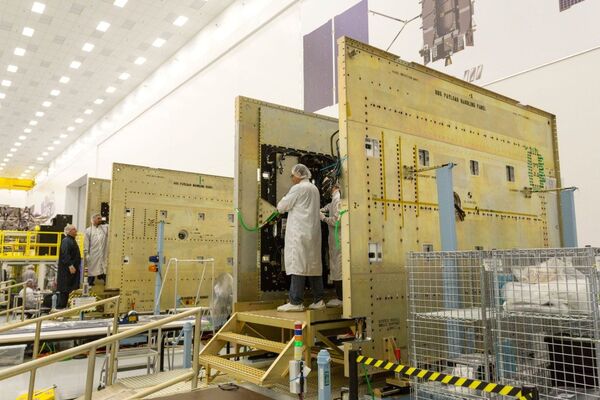
Lockheed Martin builds GPS III satellites for the US Space Force. (Lockheed Martin)
Lockheed Martin's Space business area plans to consolidate its five lines of business into three as part of a reorganisation, according to a 4 May announcement.
The new National Security Space business line will bring together the classified and defence programmes of the Military Space, Mission Solutions, and Special Programs units. No changes will occur in the Strategic and Missile Defense Systems business line, which works on strategic deterrence, missile defence, and hypersonics, or in the Commercial Civil Space business line, which focuses on exploration and scientific research.
Lockheed Martin Space is also creating a Product Center to drive “affordability and marketability” of its offering. Lockheed Martin vice-presidents Maria Demaree and Mike Patton will lead the National Security Space business line and the Product Center, respectively.
The Space business area, which is based in the US state of Colorado, said the changes will enhance its “speed and effectiveness” and that it intends to “transition into this new organisational alignment over the coming months”. The restructuring announcement follows the recent formation of Lockheed Martin Space's Ignite organisation, which focuses on “rapid capability development”.
The organisational changes are taking place under Robert Lightfoot, executive vice-president of Lockheed Martin Space. Lightfoot, a former acting administrator of NASA, assumed his current role in January 2022, replacing Richard Ambrose, who retired.
Lockheed Martin Space, one of four major business areas within Lockheed Martin, employs about 23,000 people. Its defence products include Global Positioning System (GPS) III satellites and submarine-launched Trident II D5 ballistic missiles.
Looking to read the full article?
Gain unlimited access to Janes news and more...
